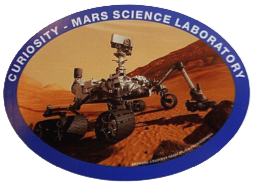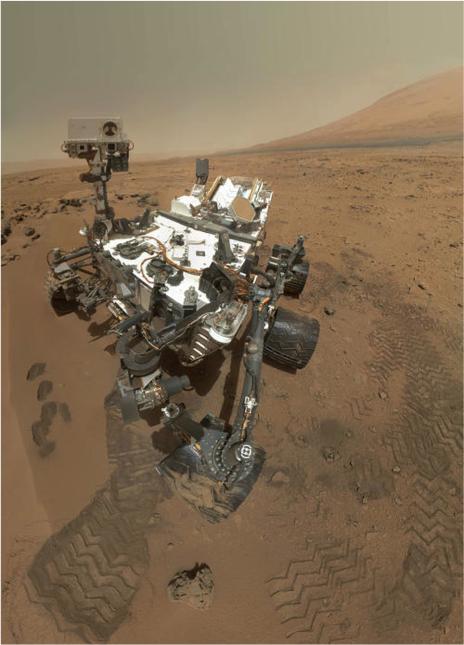

On Sol 84 (Oct. 31, 2012), NASA's Curiosity rover used the Mars Hand Lens Imager (MAHLI) to capture this set of 55 high-resolution images, which were stitched together to create this full-color self-portrait.
The Mars Science Laboratory (Curiosity) landed on the floor of Gale Crater on Aug. 6, 2012 at 4.6° S latitude and 222.6° W longitude.
The goal of the MSL mission is to assess Mars' habitability. See the links below for more information.
Science Objectives of the MSL mission are classified as biological, geological and geochemical, planetary process, and surface radiation objectives.
Mission Description
Spacecraft Description
Curiosity's primary atmospheric instrument, REMS, collects meteorological data that include wind, temperature, UV flux, humidity and pressure measurements.
SAM's laser spectrometer measures atmospheric isotope abundances.
Mastcam takes color, multispectral color, and stereo images which can be used to observe clouds and weather phenomena, track optical depth and perform sky photometry.
ChemCam's Laser-Induced Breakdown Spectrometer has made multiple passive sky observations.
DAN detects slow moving neutrons from Mars' surface to probe for subsurface water ice.
Mission Goal
The goal of the MSL mission is to assess Mars' habitability. See the links below for more information.
Science Objectives of the MSL mission are classified as biological, geological and geochemical, planetary process, and surface radiation objectives.
Mission Description
Spacecraft Description
CERTIFIED
Archived Data Sets
Curiosity's primary atmospheric instrument, REMS, collects meteorological data that include wind, temperature, UV flux, humidity and pressure measurements.
Sample Analysis at Mars (SAM)
SAM's laser spectrometer measures atmospheric isotope abundances.
Mastcam takes color, multispectral color, and stereo images which can be used to observe clouds and weather phenomena, track optical depth and perform sky photometry.
ChemCam's Laser-Induced Breakdown Spectrometer has made multiple passive sky observations.
DAN detects slow moving neutrons from Mars' surface to probe for subsurface water ice.
 PDS: The Planetary Atmospheres Node
PDS: The Planetary Atmospheres Node

